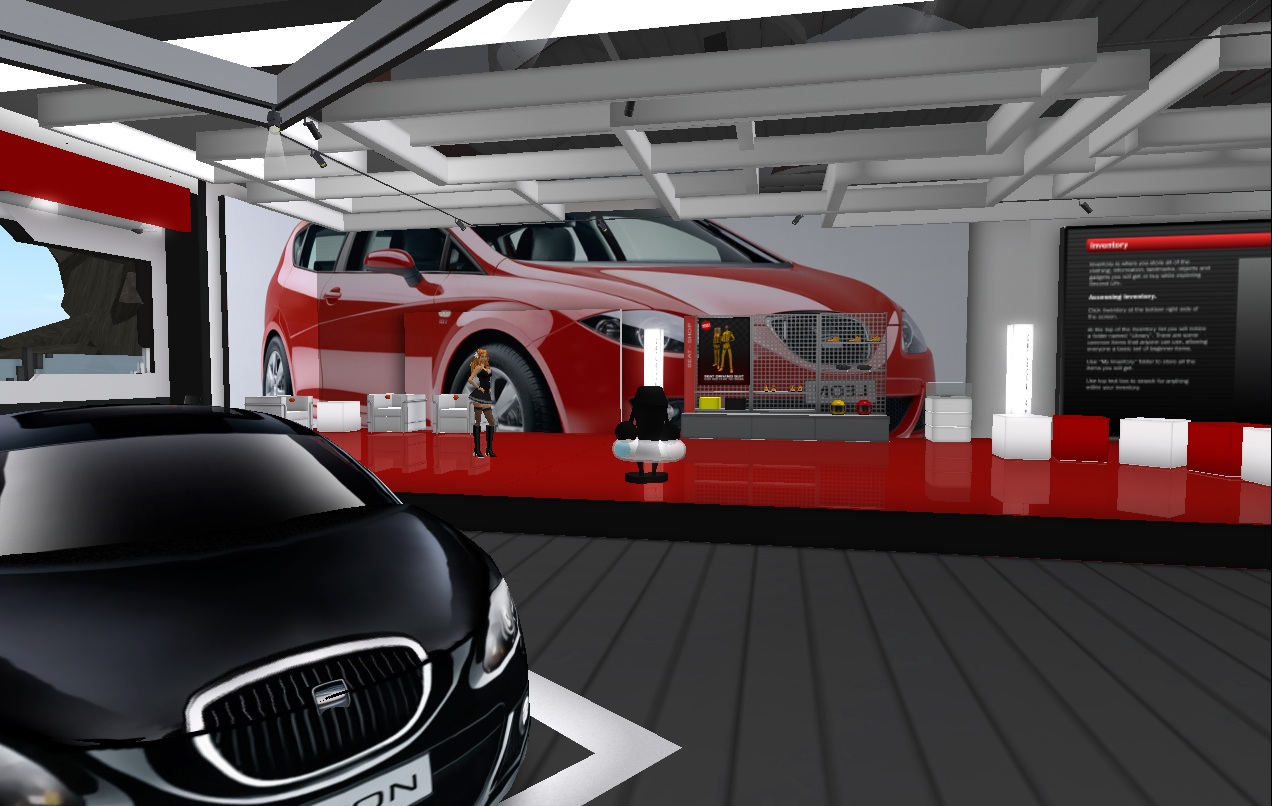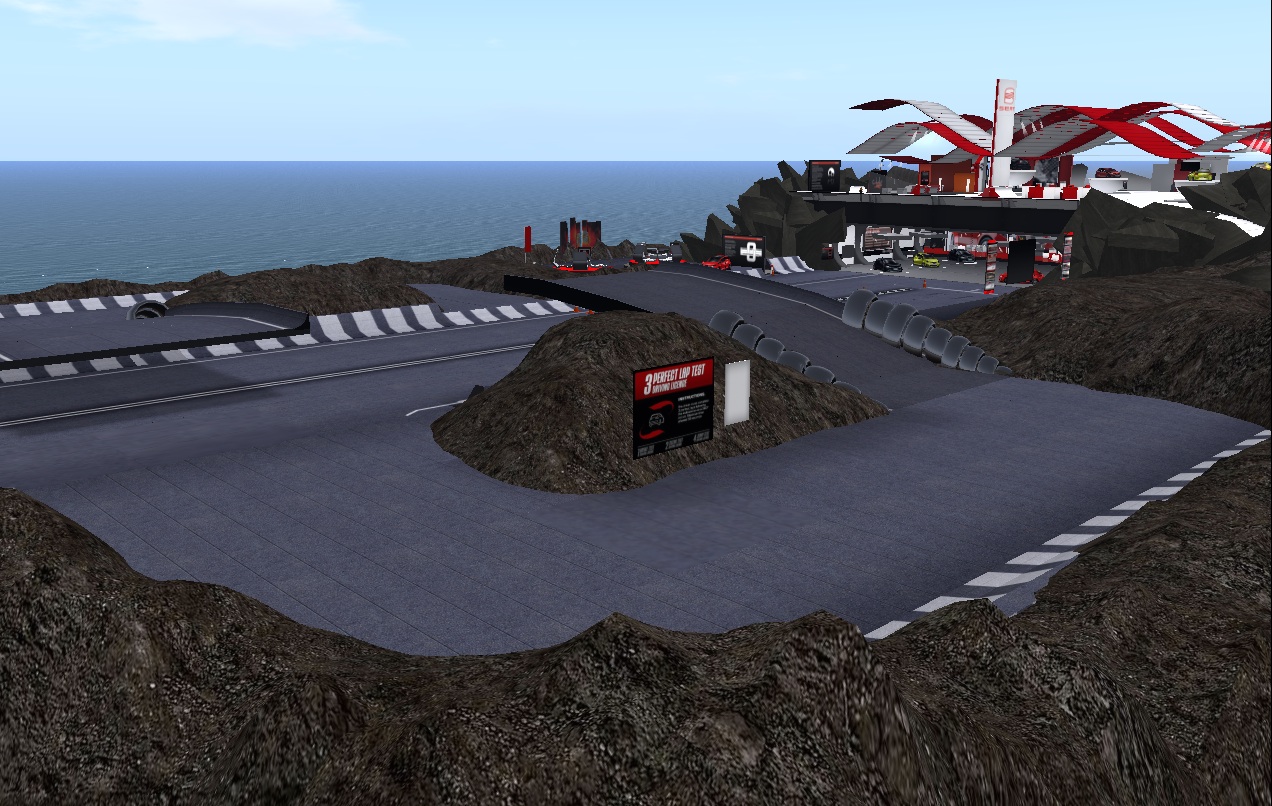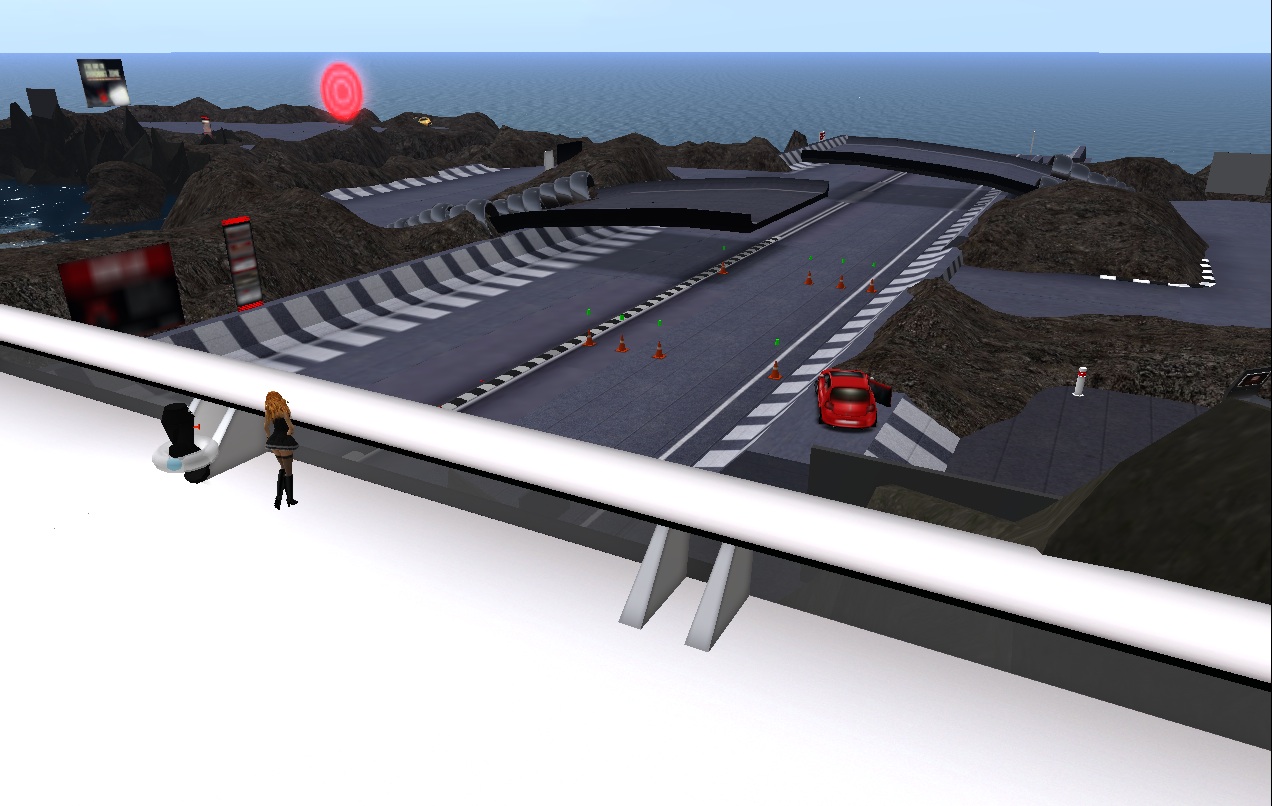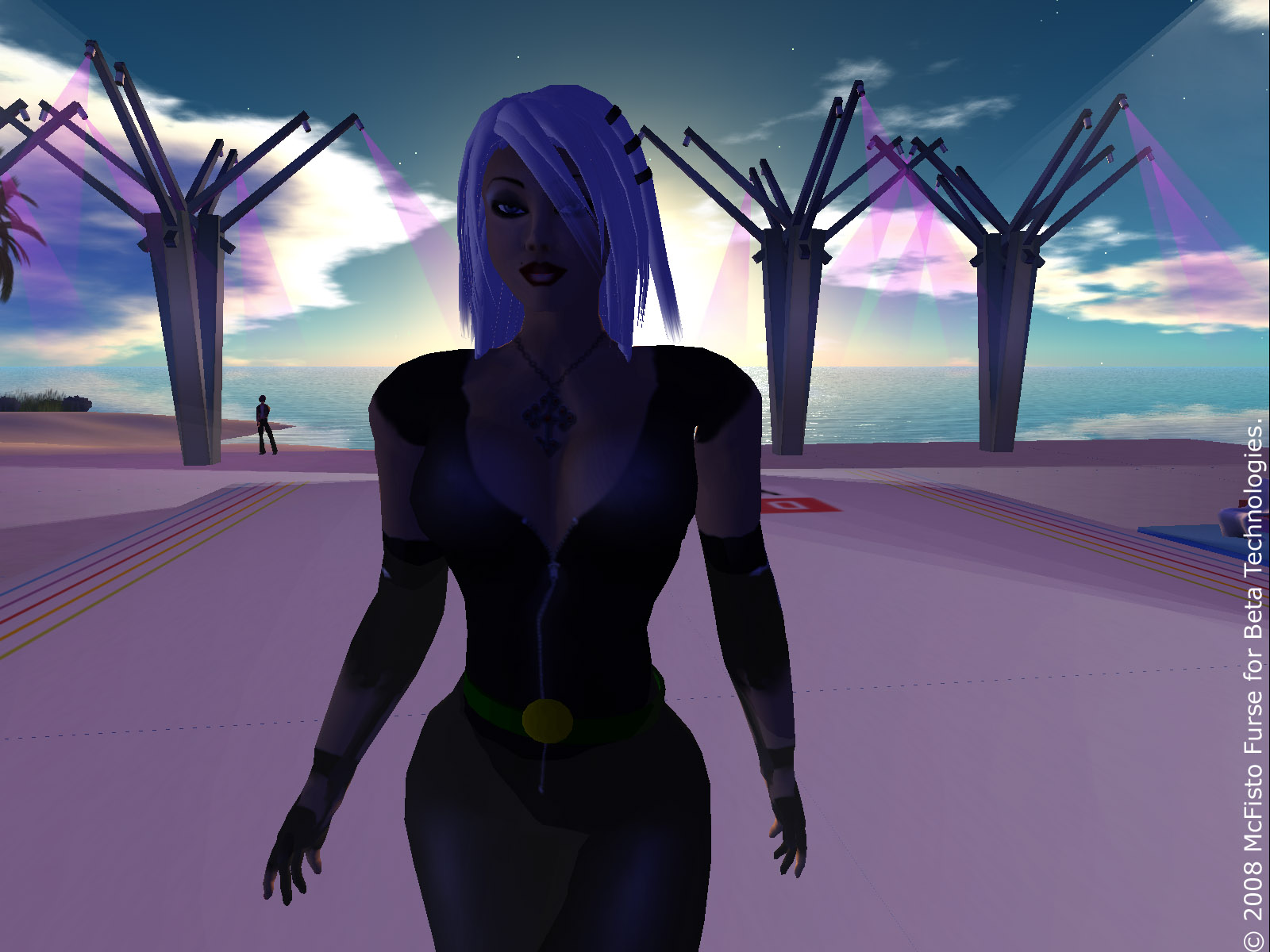At this quiet corner of the world, projects from RL companies continue to enter the Second Life® world, no matter what. The gallery shown below the break comes from the launch of SEAT‘s virtual presence in SL, the leading Spanish car manufacturer, done by Spanish Metaverse Company Mosi Mosi in Barcelona; and from the Dolce Vita “Best Fashionable Avatar” Contest, sponsored by one of the leading shopping mall chains in Portugal (with several malls elsewhere in Europe too), done by Beta Technologies.
Both virtual presences, although technically quite different, have some common models. SEAT’s virtual presence takes into account that you can’t really do realistic race tracks in SL, due to lag and poor vehicle performance. Instead, Mosi Mosi proposes a “challenge”: you learn to drive your (virtual) SEAT by completing a track, step by step, and at the end, you get a copy of the SL vehicle. So it’s giving away a freebie, but you have to earn it, by having fun driving a car in SL.
Dolce Vita sponsored a regular “best avatar” contest. However, the way the €500 prize was awarded was also innovative. Candidates submitted their pictures for voting to an external website (that way, non-residents could vote as well) using the Snapshot-to-postcard feature of SL (similar to Snapzilla). You could vote on as many pictures you wished, so long as you were registered on the site with a valid email. The 10 most voted avatars would then be selected for the catwalk, posing in front of a jury, and getting a crash course in SL modelling by the leading fashionista and model Ana Lutetia.
SEAT is capitalising on the existing community of SEAT fans to bring them into SL and attend events, discussions, and generally hang around with other fans. There has been for a while a Club SEAT on the Web, and the SL-based virtual presence is, in a sense, an extension of the website. Thus, they will feature contests and competitions between fans, but also have parties for them to enjoy — something that is utterly impossible iRL. It’s not just “replicate” the look & feel of the company or of the website: it’s creating new opportunities for people to get in touch using Second Life.
Dolce Vita, on the other hand, instead of starting with the usual here-is-my-island-which-is-a-replica-of-a-real-building virtual presence, dropped booths all over the multiple islands of the fragmented Portuguese community in SL (for once, at least, one common element was found on all of them: a virtual booth for Dolce Vita!). This was the starting point to gather registrations for the contest, which was actually held on the mainland. The winners of the two sessions would then be able to use their €500 voucher to spend on their shopping on one of the RL malls. Again, the strong ties between SL (where the communities gather) and the brand in RL (the mall where the winners go to shop with their prizes) were the focus for this event.
Similar and different, both projects, in their own way, bring alternatives to virtual presences in Second Life. Both try to address existing online communities and create virtual spaces for them. Both make sure that the ties between SL and RL are not lost. Both use strong drives for people to come and visit — they’re not simply showrooms or “empty places” which people visit by chance. None leverage on the RL media to gather attention; they use techniques like viral marketing, word-of-mouth, SL bloggers, pictures on Flickr and other Web 2.0 sites to draw attention. They’re not intrusive. They’re also small-scale, adequately budgeted for, but with a clear strategy and a good risk estimate. SEAT opted for a long-term stay in SL; Dolce Vita, for now, opted for single, isolated events, but with a SL-wide spread of information among their target (regular Portuguese residents in SL).
Definitely, Iberia is not asleep and ignoring the SL phenomenon 🙂 Together, close to a million SL accounts were registered in Spain and Portugal, and, although the number of active users follows a similar percentage to the SL average, about 5% of all users in SL come from these two countries of Western Europe. It’s not such a small market.







































